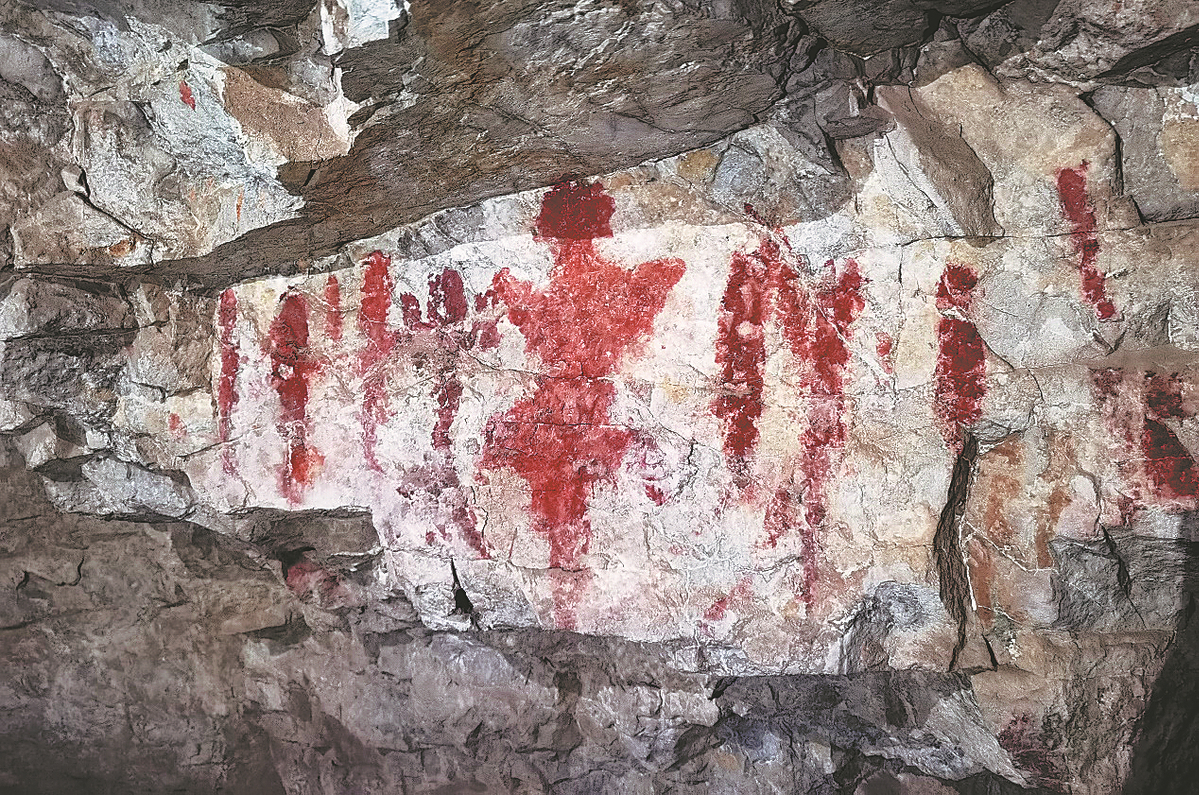China Daily: Key find places humans in Xizang 40,000 years ago

Rock paintings in red ocher are seen inside the cave in September. [Photo/China Daily]
A landmark archaeological discovery in the Xizang autonomous region has offered scientific evidence that humans inhabited the Qinghai-Tibet Plateau as many as 40,000 years ago, greatly extending the timeline of human history in the area.
More than 10,000 artifacts from various periods have been unearthed at the Merungdap Cave site in Ge'gyai county of Ngari prefecture.
Experts said the seminal find comes from what appears to be the first prehistoric human cave in the heart of the Qinghai-Tibet Plateau.
The prehistoric cave site is situated at an altitude of around 4,600 meters and offers valuable insights into ancient human activities.
The Institute of Vertebrate Paleontology and Paleoanthropology of the Chinese Academy of Sciences said it conducted excavations between 2018 and 2020 in cooperation with the region's Institute of Cultural Relics Protection. Three consecutive excavations were conducted at Cave No 1 of the dig site.
An excavation conducted later in 2021 uncovered older cultural layers, including stone cores made from black horn shale, stone tools and several animal bones, pottery fragments and ancient needles.
These findings indicate that ancient humans used the site for some time, and their activities extend further back and are more complex than previously thought.
The discovery is also of great significance as it is the first large-scale cave with human artifacts to be found in the western part of the plateau. This fills a gap in knowledge about cave sites in Xizang and contributes to the understanding of prehistoric archaeology, researchers said.
Zhang Xiaoling, a researcher at the Institute of Vertebrate Paleontology and Paleoanthropology, expressed enthusiasm about the finding. She emphasized that the Merungdap Cave site significantly extends the history of human habitation in the Qinghai-Tibet Plateau's hinterland, particularly in Xizang's Ngari prefecture.
"Previously, the oldest known site in Ngari was the Gadpaserul site ruins, dating back approximately 3,000 to 4,000 years. The Merungdap Cave site, however, contains remains from more than 3,000 years ago and potentially even older cultural artifacts dating back 40,000 years," Zhang said, adding that the extended timeline adds a crucial chapter to the region's history.
Zhang said the archaeological team conducted a total of six excavations from 2018 to 2023, with the Merungdap Cave site being discovered in 2018.
In 2019, during the early period of excavation, the research team found the cave also had rock paintings made using red ocher. These paintings predominantly depict geometric patterns, including neatly arranged vertical stripes, human silhouettes, handprints and motifs such as the sun, according to Xinhua News Agency.
"Over the course of the past six years, we have uncovered remnants of human habitation spanning at least three different periods. The earliest artifacts can be traced back 40,000 years, while the most recent ones date to approximately 4,000 years ago," ZHANG said.
While many questions remain unanswered, the materials unearthed at the Merungdap Cave site promise to provide valuable new insights. As the work continues, the findings will serve as a foundation for further research and understanding, offering glimpses into the ancient history of the plateau and placing it in the broader context of human civilization, she said. (China Daily)
Download attachments: